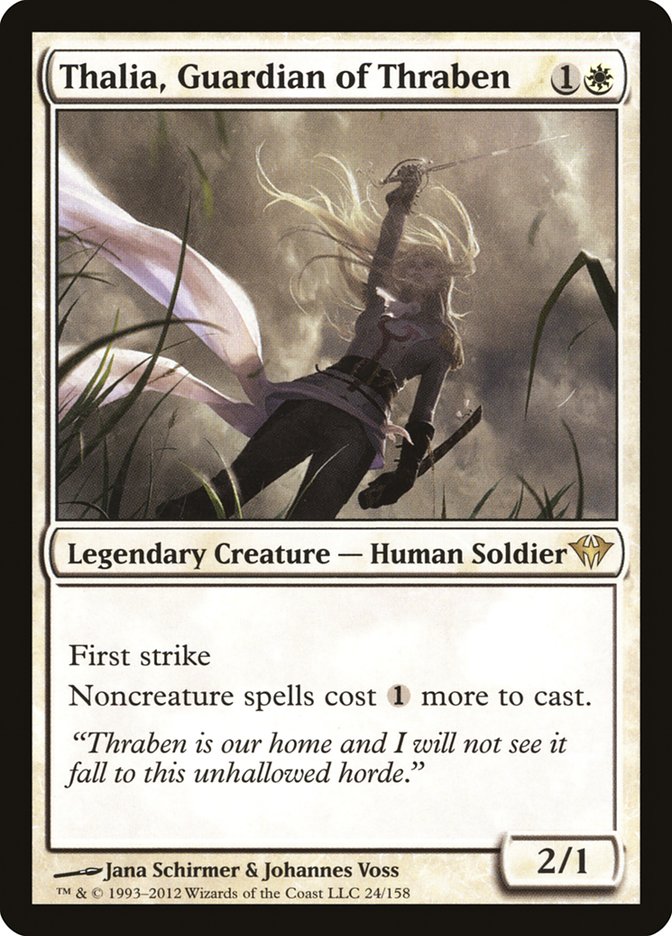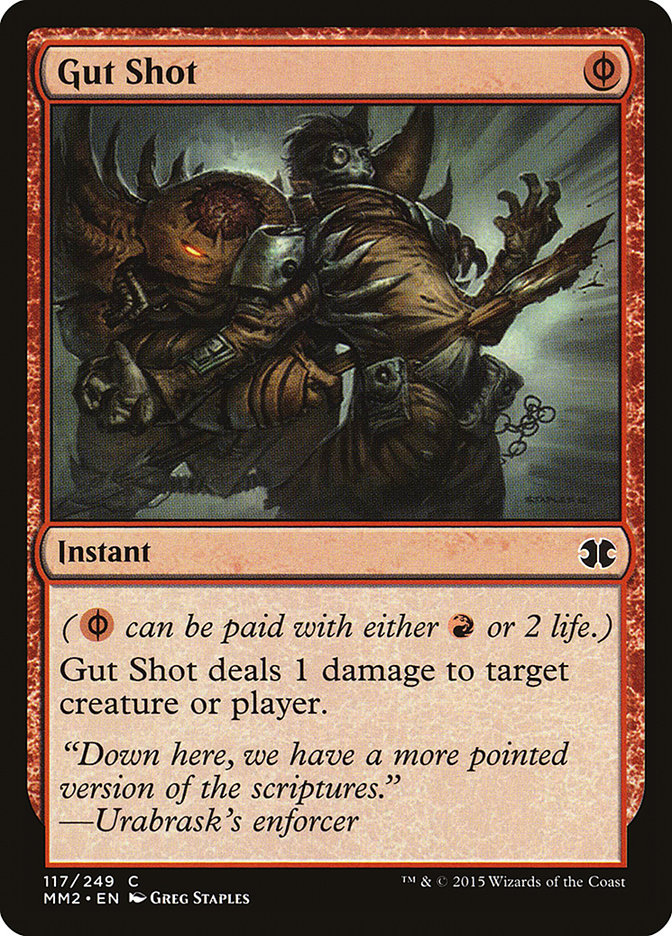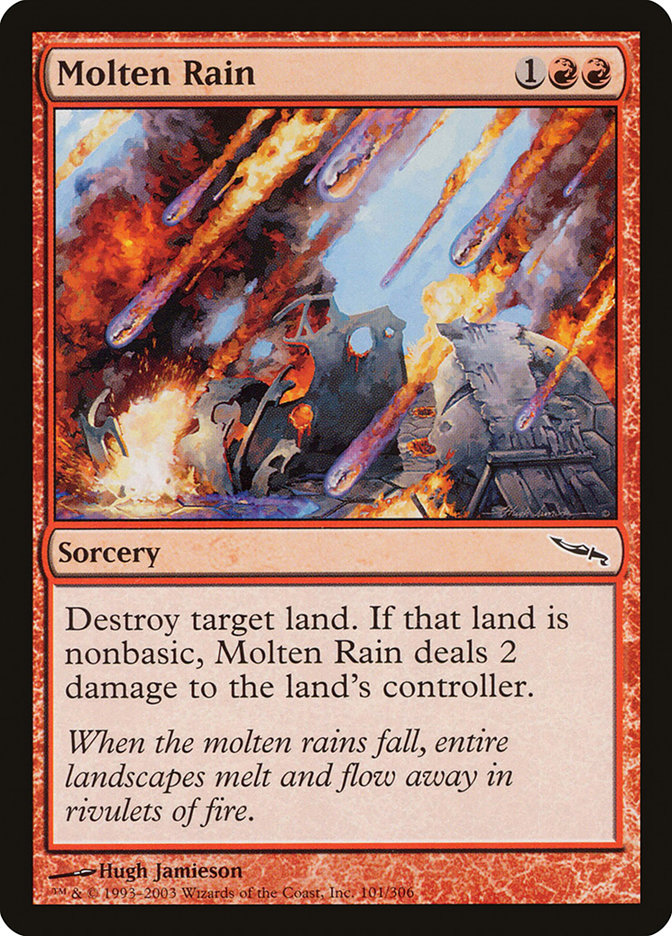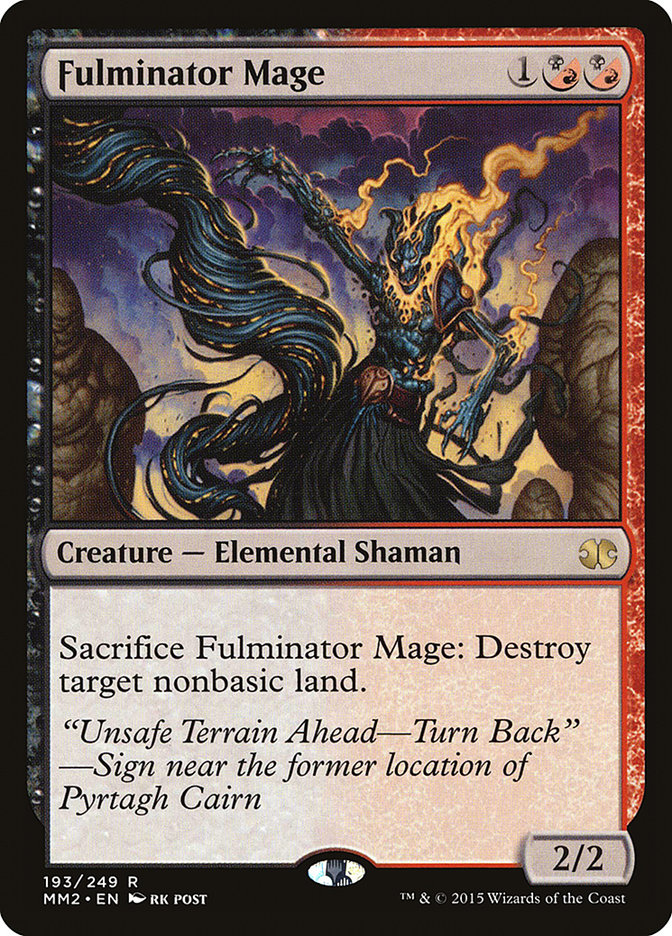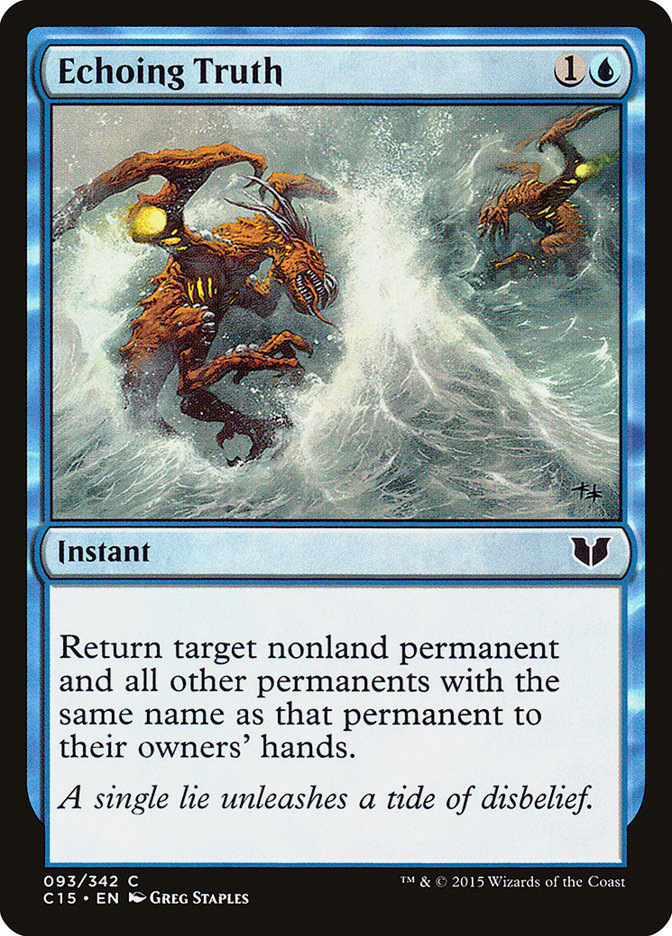Modern is a wide-open format with somewhere around eighteen decks in just the top two tiers alongside a wealth of other viable strategies. Just this weekend, Liam Lonergan won the #SCGINVI with Elves!
Creatures (34)
- 4 Llanowar Elves
- 1 Eternal Witness
- 4 Heritage Druid
- 4 Nettle Sentinel
- 3 Elvish Visionary
- 4 Elvish Archdruid
- 3 Ezuri, Renegade Leader
- 1 Spellskite
- 1 Scavenging Ooze
- 4 Elvish Mystic
- 1 Reclamation Sage
- 4 Dwynen's Elite
Lands (18)
Spells (8)

With so many different decks, how can you prepare a sideboard against all of them? The truth is you just can’t, but that doesn’t mean you can’t be ready to take down your next tournament! Now that we have talked about the decks you might expect to see and how to identify them, we will talk about how to build your sideboard and what you should expect to see from opponents.
Before you can correctly construct a sideboard, first you need to look at the other decks in the metagame. Take the time to go back again and understand what weaknesses the decks have and what sideboard strategies they are using. Watch for cards that will completely shut down your deck, and try to really understand what your opponents are trying to do. A deep understanding of the meta will help to build a more tuned sideboard.
About Sideboarding
Knowing how to construct a sideboard and how to sideboard properly will increase your win percentage, giving you the edge you need to place higher in tournaments. Because of the way tournament Magic is structured, you will play more post-sideboard games than games with your maindeck. Always remember that you’re sideboarding at the same time as your opponent. You’re not bringing in cards to defeat their maindeck; you’re trying to beat their sideboarded deck.
Much of the time you want to bring in specific cards against certain strategies. The color white has some of the most effective hate cards. By playing white you gain access to Rest in Peace; Stony Silence; Path to Exile; Ghostly Prison; Thalia, Guardian of Thraben; and more.
However, every color has access to great sideboard cards! For example, Abrupt Decay, Thoughtseize, and Anger of the Gods are all fantastic considerations for your sideboard, even though they don’t hose a specific strategy.
Often you will hear about the “metagame clock,” where aggro, midrange, and control play a rock-paper-scissors dance. While that generally works, Magic is much more complex than that, older formats even more so. There are so many intricacies between decks, and sideboarding increases those differences. While the clock tends to hold true, most decks can shift along the clock from one position to another. Watch for your opponent to move around the clock too. You can try to one-up them, but be careful, or you might get one-upped.
You might be playing a deck based on a list you found online, but in many cases you will want to tweak some cards for the metagame you are expecting. If you are new to a deck and there is an established sideboard, feel free to use it for a while, but as you learn the deck better, start to expand and make your own decisions about what cards you want. In fact, I have a binder full of Merfolk cards that I can swap in and out of my 75.
How to Build a Sideboard
Make sure to consider the decks you will be facing when deciding on sideboard cards. This may sound obvious, but general sideboard lists you might find online could be designed for a different metagame. Especially when preparing for a smaller metagame, think through all the decks you know your friends will be playing. It is not possible to build against every deck in the Modern format, but you can plan against specific archetypes.
Don’t be afraid to change the sideboard before every event, because every event has a different metagame. Many of my friends at FNM play aggressive decks, so one night I put Chalice of the Void and Gut Shot into my maindeck, which made a huge difference. But for bigger events, those cards might not even make it into my sideboard!
You also need to consider your own deck. Every archetype has its weaknesses. In general, there are four categories of cards to sideboard: general hate cards that are good against entire archetypes, specific hate cards that are good against one or two strategies or cards, anti-hate cards that can help you one-up opposing sideboard plans, and transformative sideboards that allow you to change your strategy or your position on the metagame clock.
General Hate Cards
Hate cards are meant to stop your opponent from being able to execute their primary plan. In general, it’s best to spend your limited sideboard space on hate cards that can help in many of your bad matchups. Also consider cards that fit into your core strategy but can raise or lower your curve to match your opponent’s.
If you struggle against aggressive strategies, look into including battlefield wipes and hoser artifacts. Note that each one has different upsides. For example, Wrath of God is great at dealing with Thrun, the Last Troll, while Supreme Verdict is guaranteed to resolve against Merfolk.
If you struggle against combo decks, you likely want to bring in countermagic, discard, or some other way to stop their combo.
If you struggle against control decks, consider bringing in countermagic, resilient threats, or protection spells.
Specific Hate Cards
Most decks have cards that are very hard for them to win through. These are hate cards for specific matchups. For example, if you know you have a very hard time beating Infect, consider running Spellskite. It is very hard for them to win when you have a blocker that can steal all of their pump spells. But keep in mind they’re likely to bring in Twisted Image to kill your Spellskite and draw a card while doing it.
Many of these cards target a specific strategy or set of strategies, like the graveyard. Some decks in Modern rely heavily on their graveyard, either by growing a Tarmogoyf or using the dredge mechanic. Popular graveyard hate cards include Leyline of the Void, Rest in Peace, Grafdigger’s Cage, Relic of Progenitus, Nihil Spellbomb, and even Tormod’s Crypt or Wheel of Sun and Moon for decks that need access to their own graveyard.
Another common strategy is to make use of land destruction. Many decks have really greedy manabases or need a set of lands to do well. Three-color decks are easy to disrupt, and big mana decks like Eldrazi and R/G Tron feel anemic without their multi-mana lands. Crumble to Dust can take out every copy of a problem land, even functioning as a discard spell if you know the opponent has a copy in their hand. Other popular choices for land hate Spreading Seas, Tectonic Edge, Fulminator Mage, World Breaker, or the entire R/W Control deck.
Incidental lifegain is also great against most of the aggressive decks in the metagame. They make great sideboard choices because gaining life directly interferes with the win condition of every aggressive deck except Infect, so two-for-one cards like Kitchen Finks can often feel like a three-for-one. Some decks even run some of these cards maindeck, depending on the metagame and their weakness to aggro decks. Popular choices for incidental life gain include Kitchen Finks, Obstinate Baloth, Lightning Helix, Thragtusk, and Scavenging Ooze. In fact, R/G Tron can even cast another hate card, Nature’s Claim, targeting its own Chromatic Star to turn Nature’s Claim into a lifegain spell instead.
Combo decks that try to build a perfect hand, like U/R Storm, or find specific cards, like Ad Nauseam, can be weak to hand disruption and countermagic. Consider including Thoughtseize, Inquisition of Kozilek, or Duress for these matchups. Alternatively, a well-timed Mana Leak, Remand, Dispel, or Spell Pierce can buy you the time you need to defeat the combo player before they can go off again.
Finally, there’s the poster child for specific hate cards in Modern, the Affinity deck. Artifact removal is usable against a number of decks, but a well-timed Shatterstorm can be game over for an Affinity player. Many decks run some combination of these artifact hate cards:
Anti-Hate Hate Cards
This is a very specific category for you to consider if your deck folds to hate cards. These are cards you bring in against cards that you know your opponents might bring in. For example, you know many decks will bring Spellskite in against Infect. This means that, as the Infect player, you need to bring in your answers to their Spellskite: Twisted Image, Nature’s Claim, and the like. Infect also brings in Spellskite to protect their own creatures from removal, so bringing in a copy of Go for the Throat can get around that plan.
Many of the specific hate cards I listed above are artifacts or enchantments and often have a low converted mana cost so they can come out early. As such, you can usually rely on cards like Nature’s Claim, Abrupt Decay, or Echoing Truth to get you out of a tough spot. For the instants and sorceries, consider bringing in hand disruption or countermagic if you’re running blue or black.
Something else to consider: if you just can’t beat a certain matchup, it might not even be worth devoting sideboard space to it. This is a tough call because so many factors go into it. First, do your sideboard cards help enough? Hurkyl’s Recall usually only buys you one turn against Affinity, so some Merfolk players just abandon the matchup and dedicate those sideboard slots to other decks.
Next, how often do you expect to see the matchup? No deck has higher than a 10-15% metagame share in Modern, so you might dodge your bad matchups completely.
Finally, can this card cover other bad matchups? Abzan’s inclusion of Stony Silence is great for their Affinity matchup, but it also helps in the otherwise lopsided R/G Tron matchup. Consider your sideboard as a whole, and consider opportunity cost: every inclusion to help your win percentage against certain decks can hurt it against others.
Transformative Sideboards
Transformative sideboards are a bit different. They are designed to change your gameplan and take advantage of the fact that many opponents sideboard for your maindeck. Just like everything in Magic, this can have varying degrees of success. It is generally more involved than normal sideboarding where you just tighten up weak points, because you are shifting into an entirely different strategy. This can be done to throw your opponent off or to one-up their sideboarding plan.
Before the banning of Splinter Twin, the Grixis Twin deck used to be able to transform into Grixis Control. It could take out the combo pieces and instead become a control deck that took advantage of the tempo loss the opponent would put themselves at by leaving up disruption for the combo that wasn’t even there anymore.
The Merfolk deck transforms a little bit when it takes out Aether Vial and brings in Tectonic Edge in grindy matchups where the Vials are terrible topdecks. It moves from a swarm strategy to a more conservative plan. A more extreme example is how Grixis Delver can look an awful lot like Grixis Control post-sideboard. They share several cards, so it is easy to shift from one to another with only a fifteen-card sideboard. A Grixis Delver deck will never be as controlling as a Grixis Control deck, but it can move much closer than you might expect. Conversely, Storm plays a largely spell-based plan in the maindeck, but it can sideboard into an aggressive Young Pyromancer plan once the opponent takes out all of their removal post-sideboard.
Lands (18)
Spells (42)
- 4 Lightning Bolt
- 4 Sleight of Hand
- 4 Serum Visions
- 4 Remand
- 2 Cryptic Command
- 4 Manamorphose
- 4 Pyromancer Ascension
- 4 Gitaxian Probe
- 4 Noxious Revival
- 4 Visions of Beyond
- 4 Thought Scour
Sideboard

Making the Swap
The final step is to figure out what cards you want to take out of your main deck. First, take out cards that are less useful against your opponent’s deck. If they are running a small number of creatures, you will likely want to take out your removal. If they are very fast, you might want to take out some of your higher-cost cards and try to play with a lower curve. Those may be the obvious ones, but when you still have cards to cut, you have to make harder decisions, cutting cards that are fine, but not as good in the matchup as the ones you’re bringing in.
One method people will use to sideboard is to shuffle their entire 75 together and then pull out the fifteen worst cards for the matchup. This accomplishes two things. First, it helps you make the tough choices about what to cut when it isn’t obvious. Second, it hides from your opponent how many cards you’re bringing in, which can conceal your transformative sideboard plan. It helps you think about sideboarding differently, and a fresh perspective is always nice. You can even practice this at home to form sideboard plans before you arrive at a tournament!
Read primers for the deck you play and see what they say about sideboarding. While sideboard guides can be helpful until you fully understand a deck, you’ll eventually develop the skills to design your own sideboarding plans. Know what cards are likely going to be played against you and are really difficult to beat and consider the cards you can play to stop other decks that are challenging matchups. Once you know your deck and the other decks in the metagame, sideboarding will get easier. But until then, keep learning and trying and eventually you will get to a point that you are happy with.
May you always draw your sideboard cards, and as always, happy gaming!




